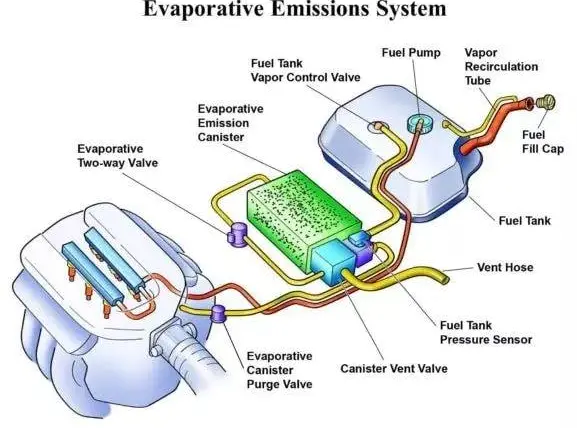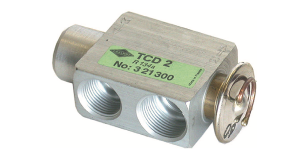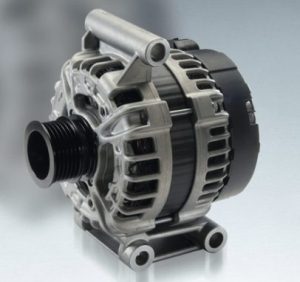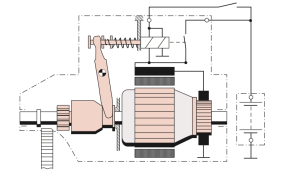The Evaporative Emission Control System, also known as EVAP, is an important component in modern automobiles that helps reduce harmful emissions released into the environment. In this blog, we will take a closer look at what the EVAP system is, how it works, and its importance in reducing pollution.
What is the EVAP system?
The EVAP system is designed to capture and store fuel vapor that would otherwise be released into the atmosphere through the vehicle’s fuel system. Fuel vapor is produced by the fuel tank as it heats up due to engine and environmental factors. These vapors are harmful to the environment and contribute to air pollution. The EVAP system captures and stores these vapors until they can be safely burned by the engine.
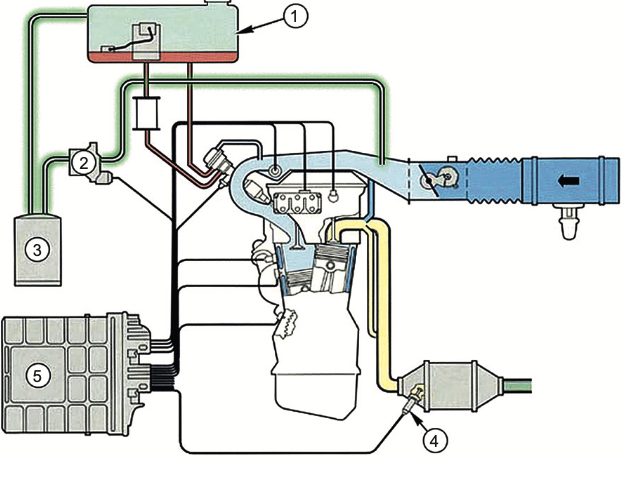
How does the EVAP system work?
The EVAP system is comprised of several components, including the fuel tank, charcoal canister, purge valve, and sensors. When the vehicle is not running, the EVAP system is closed, preventing fuel vapors from escaping into the atmosphere. The charcoal canister, which is connected to the fuel tank, absorbs the fuel vapor and stores it until it can be burned by the engine.
When the engine is running, the EVAP system opens and the fuel vapor is drawn into the engine through the purge valve. The sensors in the EVAP system monitor the flow of fuel vapor and ensure that it is being burned efficiently by the engine.
Why is the EVAP system important?
The EVAP system plays a vital role in reducing pollution by capturing and burning fuel vapors that would otherwise be released into the environment. The U.S. Environmental Protection Agency (EPA) requires all vehicles manufactured after 1996 to have an EVAP system. The system is also important for ensuring that the vehicle runs efficiently and meets emissions standards.
In addition to its environmental benefits, the EVAP system can also help diagnose other problems with the vehicle. For example, if the system detects a leak in the fuel system, it can trigger a warning light on the dashboard, alerting the driver to the problem.
In conclusion, the EVAP system is an important component in modern automobiles that helps reduce harmful emissions and improve overall vehicle efficiency. By capturing and burning fuel vapors, the EVAP system plays a critical role in reducing air pollution and protecting the environment.
Fuel Tank: The fuel tank is the container that holds the fuel in the vehicle. It is an airtight container that is designed to hold fuel safely and securely. The fuel tank is connected to the rest of the fuel system and allows fuel to be pumped from the tank to the engine.
Charcoal Canister: The charcoal canister is a component of the EVAP system that is designed to absorb fuel vapors. The canister is filled with activated charcoal, which has a large surface area that can absorb a lot of fuel vapor. When fuel vapor enters the canister, it is absorbed by the charcoal and stored until it can be burned by the engine.
Purge Valve: The purge valve is a small valve in the EVAP system that controls the flow of fuel vapor. When the engine is running, the purge valve opens, allowing fuel vapor to flow from the charcoal canister to the engine. The valve is controlled by the vehicle’s engine control module (ECM), which ensures that the right amount of fuel vapor is flowing to the engine.
Sensors: The EVAP system also includes sensors that monitor the flow of fuel vapor and ensure that the system is functioning properly. These sensors can detect leaks in the fuel system and other problems that could affect the efficiency of the EVAP system.
Leak Detection Pump (LDP): The LDP is a component of some EVAP systems that uses pressure and vacuum to detect leaks in the fuel system. The pump applies pressure to the system and then measures how long it takes for the pressure to drop. If the pressure drops too quickly, the pump can detect a leak and trigger a warning light on the dashboard.
Overall, the EVAP system is an important component in modern automobiles that helps reduce harmful emissions and improve overall vehicle efficiency. By capturing and burning fuel vapors, the EVAP system plays a critical role in reducing air pollution and protecting the environment.
Advantages of the EVAP System:
- Reduces Harmful Emissions: The EVAP system is designed to capture and store fuel vapors that would otherwise be released into the atmosphere. By reducing the amount of harmful emissions released into the environment, the EVAP system helps improve air quality and protect the environment.
- Improves Vehicle Efficiency: The EVAP system can also help improve the overall efficiency of the vehicle by ensuring that fuel is being used efficiently. By burning fuel vapor that would otherwise be wasted, the EVAP system can help reduce fuel consumption and improve the vehicle’s gas mileage.
- Diagnostic Capabilities: The EVAP system includes sensors that can detect problems with the fuel system, such as leaks or other issues. These sensors can trigger a warning light on the dashboard, alerting the driver to the problem and allowing for prompt repairs.
Disadvantages of the EVAP System:
- Complexity: The EVAP system is a complex system that includes several components and sensors. This complexity can make it more difficult and expensive to repair or replace components of the system if they fail.
- Potential for Malfunction: Like any system in a vehicle, the EVAP system can malfunction or fail over time. When this happens, it can cause problems with the vehicle’s emissions and efficiency.
- Cost: The EVAP system can be expensive to repair or replace, especially if the problem is not detected early. This can be a burden for vehicle owners who are already dealing with the costs of maintenance and repairs.
Overall, the advantages of the EVAP system outweigh the disadvantages, as it helps reduce harmful emissions, improves vehicle efficiency, and has diagnostic capabilities. However, vehicle owners should be aware of the potential for malfunction and the cost of repairs. Regular maintenance and inspections can help prevent problems with the EVAP system and ensure that it is functioning properly.

